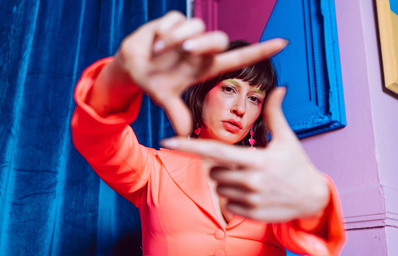Although we may not be aware of it, from a young age, our perception has been altered by the media we consume. As women, we often find the characters we relate to taking the back seat in film: a sexy body used for a slow-motion bikini shot, the damsel in distress — a mere prop to be saved by the ever-heroic male protagonist. We’ve all been conditioned to accept this frame of thinking because this is the media that raised us — written and produced by and for a heterosexual male audience. This is known as the Male Gaze theory.
Coined by scholar and filmmaker Laura Mulvey in her essay, Visual Pleasure and Narrative Cinema, Mulvey seeks to understand the societal implications of framing media from the male perspective. In these cinematic representations, female characters exist only in terms of what they represent to the male characters. In doing so, the male gaze denies the female’s agency and identity, transforming her from person to object, only to be considered for her beauty and sex appeal.
This hollow representation of a woman’s worth so effortlessly slips past our moral filter because this is how we were raised to view ourselves — this is all we know. Modern film teaches us that, as women, our value is directly associated with what we can provide to our male counterparts, and these lessons start from youth.
The family movie Transformers features a female lead character played by Megan Fox. Known for her conventional beauty, her character’s purpose is to play the male protagonist’s dream woman. This is exemplified by the scene introducing her in the film, in which the director uses camera angles and slow-motion shots on her exposed and sweaty body. Although most of the words used throughout the scene are mechanical jargon, the mood built by the cinematography allows for the dialogue to double as sexual references. See for yourself in the clip below:
Although this seems like a harmless use of cinematic liberty to depict a beautiful woman in film, the societal implications are undeniable. Transformers was a box-office hit, advertised for young audiences and selling billions of dollars worth of action figures in toy stores.
Consider the young girls who watch this movie and see themselves in the lead female character. They will aspire to be her, unknowingly sexualizing themselves for the pleasure of men. Victims of misguided portrayals in media, they have been taught from childhood that this objectification is synonymous with their desirability and worth.
We see this in television shows such as The Big Bang Theory, where value is equated with sex appeal, and intelligence is associated with unattractiveness and undesirability. Penny, a love interest, is the epitome of the “dumb blonde” trope, whose character sharply contrasts with Amy, the plain-looking undesirable scientist friend.
In later seasons, the writers recognized these flaws in their character development and acknowledged that women can be depicted as more than one-dimensional beings. We see Penny developing her career and Amy exploring a romantic relationship with one of the male leads.
This change of pace is one we need to see from society as a whole, and we’re beginning to. But this doesn’t mean there isn’t further work to be done. Even female heroines like Wonder Woman submit themselves to the Male Gaze. Sold under the guise of “female empowerment,” we see a beautiful woman fighting crime in an outfit no more significant than your average swimsuit, while her male superhero counterparts are dressed in armor, protective gear, and other more appropriate apparel for the role they’re playing.
It’s no surprise this conversation isn’t more frequently had; we’ve become desensitized after seeing subtle objectification on our phones every day. If it’s not underage TikTok stars going viral for sexual dances that are beyond age-inappropriate, it’s influencers acquiring household-name level fame from a leaked sex tape. As humans, we function on a system of reward and punishment. Seeing substanceless beauty being rewarded by male attention, and assigned greater value than intelligence, wit or even kindness, the less we will subconsciously value these attributes in ourselves.
In an age of feminine insurgence, we find a wave of women taking notice of the way we see ourselves through the lens of Hollywood. We all know that “sex sells,” and that’s indisputable. Still, it’s essential that we recognize the implications of hypersexualized media and the impacts it has on the self-perception of young women.
By designing character tropes to feature multidimensional women who possess beauty AND intelligence, we can develop better-fitting shoes for young girls to aspire to fill. It’s essential that we rewrite the gender roles set for us by previous generations and show our daughters that their value is more than surface deep. We must reevaluate what it means to be feminine with a definition we write for ourselves.


